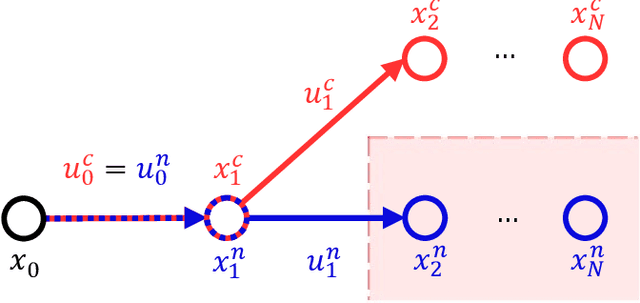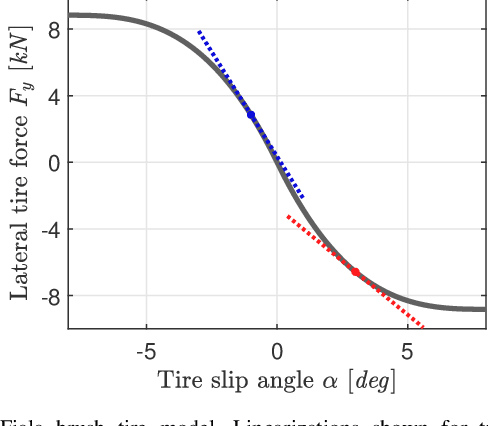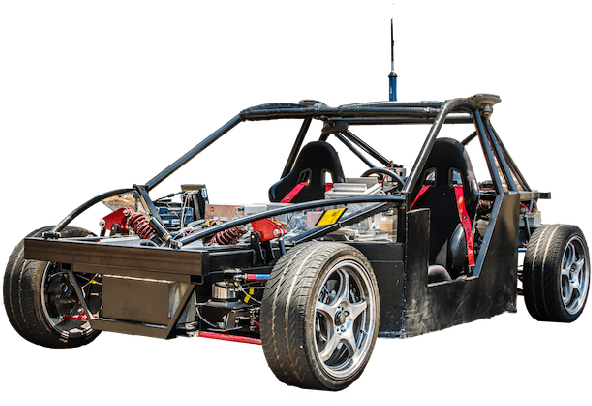Contingency Model Predictive Control for Linear Time-Varying Systems
Paper and Code
Feb 27, 2021



We present Contingency Model Predictive Control (CMPC), a motion planning and control framework that optimizes performance objectives while simultaneously maintaining a contingency plan -- an alternate trajectory that avoids a potential hazard. By preserving the existence of a feasible avoidance trajectory, CMPC anticipates emergency and keeps the controlled system in a safe state that is selectively robust to the identified hazard. We accomplish this by adding an additional prediction horizon in parallel to the typical Model Predictive Control (MPC) horizon. This extra horizon is constrained to guarantee safety from the contingent threat and is coupled to the nominal horizon at its first command. Thus, the two horizons negotiate to compute commands that are both optimized for performance and robust to the contingent event. This article presents a linear formulation for CMPC, illustrates its key features on a toy problem, and then demonstrates its efficacy experimentally on a full-size automated road vehicle that encounters a realistic pop-out obstacle. Contingency MPC approaches potential emergencies with safe, intuitive, and interpretable behavior that balances conservatism with incentive for high performance operation.
 Add to Chrome
Add to Chrome Add to Firefox
Add to Firefox Add to Edge
Add to Edge